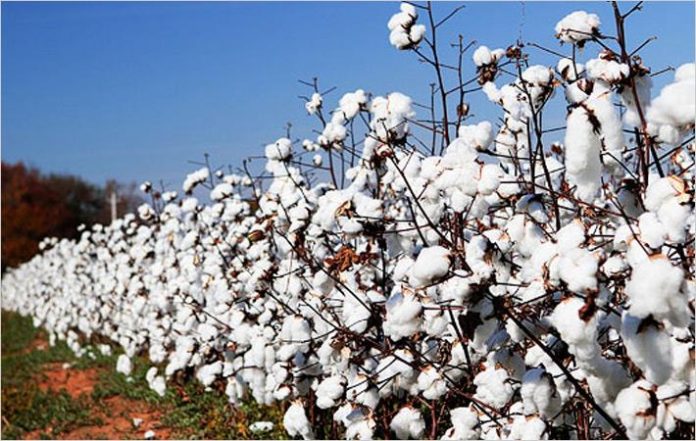In 2017/18, world cotton production is projected to increase by 8% to 24.9 million tons due entirely to an 8% expansion in world cotton area to 31.7 million hectares, which is below the 20-year average of 32.7 million hectares. The world average yield is forecast at 785 kg/ha. India is expected to remain the world’s largest cotton producer in 2017/18 with output increasing by 6% to 6.1 million tons. After falling by 6% in 2016/17, China’s production is projected to rebound by 7% to 5.2 million tons.
According to International Cotton Advisory Committee (ICAC), Washington-based association of cotton producing, consuming and trading countries,
world cotton production and mill use in 2017-18 are estimated at 25.1 million tonnes, which would result in a 9 percent increase in output and 2 percent rise in consumption. With output projected to increase by 4 percent to 6 million tonnes.
China’s cotton production in the same period may rise by 7 percent to 5.2 million tonnes after four seasons of decline, while Pakistan’s production is projected to increase by 17 per cent to 2 million tonnes.
Although the production forecast for the United States is 4.5 million tonnes, a rise of 20 per cent, the impact of the recent hurricane in Texas, home to around 45 percent of US cotton production, is yet to be fully assessed, according to a recent ICAC press release.
Cotton production in Brazil is forecast to increase by 5% to 1.6 million tons as high returns in 2016/17, resulting partially from a 17% increase in the average yield, are likely to encourage farmers to expand cotton area.
Global cotton consumption, which rose by 1 percent to 24.5 million tonnes in 2016-17 is projected to increase by 2 percent to 25.1 million tonnes in 2017-18. Mill use in China may grow by 1 percent to 8.1 million tonnes while India’s cotton consumption is predicted to recover by 3 percent to 5.3 million tonnes.
Mill use in Bangladesh is anticipated to remain stable at 1.4 million tonnes as widespread flooding in August this year has damaged infrastructure and made it difficult to transport goods throughout the country and to run businesses, ICAC said.
Pakistan’s mill use is expected to rise by 4% to 2.2 million tons, which follows a 13% decrease in mill use in 2015/16 and stagnation in 2016/17. Consumption in Bangladesh is projected to rise by 5% to 1.5 million tons due to strong demand domestically and internationally, and Turkey’s mill use is expected to remain stable at 1.5 million tons.
World cotton area is projected to expand by 9 percent during this period to 31.9 million hectares, and the world average yield is projected to remain unchanged at 789 kg per hectare.
World cotton stocks are predicted to remain stable at 18.5 million tonnes at the end of 2017-18, and the world stock-to-use ratio is expected to remain unchanged at about 75 percent, or nine months of mill use.
China sold over two million tonnes from its national cotton reserve between May and August this year, thereby lowering the reserve to around 6.3 million tonnes at the end of August 2017.
China’s cotton stocks are forecast to decrease another 16 per cent to 8.9 million tonnes, which would account for 48 per cent of world stocks in 2017-18. Ending stocks held outside China are expected to increase by 22 per cent to 9.6 million tonnes in 2017-18. (DS)
India’s exports are forecast to rise by 2% to 930,000 tons, and Australia’s exports are projected to increase by 8% to 760,000 tons. Bangladesh, Vietnam and China are expected to remain the world’s three largest importers.









